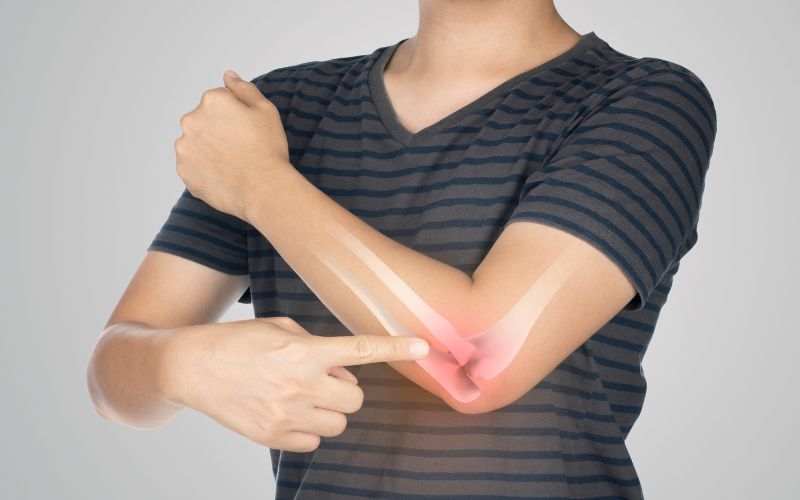
Bone Health Risks: A Silent Epidemic
Bone health is an important aspect of overall well-being, but it is often overlooked until problems arise. Our bones give us structure, protect vital organs, anchor muscles, and store calcium. Several risks and lifestyle choices can harm bone health, leading to problems like osteoporosis, fractures, and other issues with the bones. Knowing these risks and taking steps to address them can greatly improve long-term health.
Boost your health with Vital Earth Minerals—shop now for natural Cal-Mag supplements that nourish your body!
Causes Of Bone Health Risk![]()
![]()
Bone health plays a foundational role in maintaining mobility and independence throughout life. Strong bones help prevent fractures, reduce the risk of chronic pain, and support an active lifestyle. Proper bone care is essential from childhood to old age. Here are a few reasons for bone health risk:
1. Osteoporosis
Osteoporosis is often called the "silent disease" because it can develop without any symptoms. People usually only find out they have it after they suffer a fracture. It's characterized by reduced bone density and structural deterioration, making bones fragile and more likely to break. Women are particularly susceptible after menopause due to decreased estrogen levels, but men are not immune.
2. Fractures
Weakened bones are associated with fractures, especially in the hips, spine, and wrists. Hip fractures are especially disabling and lead to long-term disability and increased mortality in elderly people.
3. Vitamin D Deficiency
Vitamin D is necessary for calcium absorption and bone health. Deficiency in this vitamin leads to rickets in children and osteomalacia in adults, increasing the risk of fractures.
4. Sedentary Lifestyle
Exercise promotes bone remodeling and helps maintain bone density. However, the absence of weight-bearing exercises, such as walking, running, or resistance training, can accelerate bone loss.
5. Smoking and Alcohol Use
Smoking reduces blood flow to the bones and disrupts calcium absorption. Excessive alcohol consumption may impede normal bone remodeling and increase the risk of fractures.
6. Calcium Deficiency
Calcium is the bone-building block. Prolonged calcium deficiency leads to low bone density and early bone loss, predisposing one to osteoporosis.
7. Chronic Diseases and Medications
Chronic diseases, such as rheumatoid arthritis, diabetes, and thyroid disorders, tend to have a detrimental effect on bone health. Some medications, including corticosteroids and antiepileptics, may also lead to bone loss.
8. Aging
As we get older, our bodies find it harder to rebuild bone, which causes a natural decrease in bone density. This process is unavoidable, but what we do in our daily lives can affect how quickly we lose bone density in old age.
Lesser-Known Bone Health Risks
While some bone health risks are widely recognized, others are less well-known but equally impactful. These include hormonal imbalances, dietary factors, and exposure to environmental toxins.
1. Hormonal Imbalances
Other hormonal causes include menopause in women, polycystic ovary syndrome (PCOS), and low testosterone in men. Nutritional deficiencies are also associated with weakened bones, including deficiency of calcium and vitamin D. Magnesium, vitamin K, and proteins are important to maintain healthy bones. Their lack of diet could weaken bones' strength and density.
2. Eating Disorders
Malnutrition caused by anorexia and bulimia can lead to extreme bone loss and fractures. This condition is common in adolescents and young adults.
3. A diet with high sodium
Intake of a high sodium diet may cause calcium excretion through urine, weakening bones.
4. Environmental Toxins
Exposure to heavy metals like lead and cadmium can slow down bone remodeling and increase the risk of osteoporosis.
5. Genetic Predisposition
Family history plays a significant role in bone health. If your parents or siblings have a history of osteoporosis or fractures, your risk is higher.
Preventive Measures To Reduce Bone Health Risks
Bone care involves lifestyle changes and preventive measures. To keep your bones healthy, eat a balanced diet, exercise regularly, and avoid harmful habits.
a) Balanced Nutrition
Calcium: Adults should consume about 1,000-1,200 mg/day. Dairy, leafy greens, and many fortified foods are rich in calcium.
Vitamin D: Sunlight exposure, consumption of fortified foods, or supplements if necessary.
Other Nutrients: Foods rich in magnesium include nuts, seeds, and whole grains. Rich sources of vitamin K include green vegetables.
b) Osteoporosis Exercise
Weight-bearing and resistance exercises help build and maintain bone density. Examples include walking, jogging, dancing, and strength training.
c) Avoid Smoking and Limit Alcohol
Smoking cessation and alcohol moderation can greatly reduce the risk of bone health.
d) Bone Density Tests
Regular bone density tests may identify early stages of bone loss for people at higher risk, allowing for timely intervention.
e) Medication and Treatment
Medications such as bisphosphonates or hormone replacement therapy (HRT) can slow down bone loss and strengthen bones if a bone condition is diagnosed. Always consult a healthcare provider.
f) Fall Prevention
Falls are one of the leading causes of fractures in older adults. To prevent falls, keep your house clutter-free, use a non-slip mat in bathrooms, and add grab bars where possible. The strength and balance exercises that may be helpful include yoga or tai chi.
When To See A Doctor
Visit your doctor regularly to check your bone health. Finding problems early can help prevent serious issues. If you have concerns about your bone health, consider consulting a doctor:
- Have a family history of osteoporosis or fractures.
- Experience unexplained back pain, height loss, or a stooped posture.
- Have risk factors like prolonged corticosteroid use or chronic illness.
- If you are a postmenopausal woman or a man over 70 years old.
A healthcare provider can assess your bone health through a physical exam, bone density testing, and lab tests to measure
calcium, vitamin D, and other markers.
The Future of Bone Health
Advancing medical science and technology will enhance bone health treatment. Personalized medicine and new treatments will also enhance prevention and recovery.
New advances in medical science continue to provide ways to protect and improve bone health. Emerging therapies, such as anabolic agents that stimulate bone formation and precision medicine approaches tailored to particular risk profiles, are promising interventions for better prevention and management of bone health risks.
Moreover, awareness and education on bone health can begin during childhood, bringing healthier bones to all ages.
Conclusion
Bone health is a lifelong commitment, and nutrition, physical activity, and overall lifestyle play an important role. It can protect your bones from risk factors and provide a better quality of life in your older years. It is never too early or too late to begin taking care of your bones.
Frequently Asked Questions
What are the early signs of poor bone health?
Early symptoms include repeated fractures, back pain, loss of height, and a slouching posture. However, poor bone health usually has no symptoms until the loss of bones is severe.
How can I improve my bone health naturally?
Eat a well-balanced diet with calcium and vitamin D, exercise regularly with weight-bearing activities, quit smoking, and avoid excessive alcohol.
Who is most at risk for osteoporosis?
Risk factors include postmenopausal women, elderly patients, individuals with a family history of osteoporosis, and patients with chronic illnesses or long-term corticosteroids.

